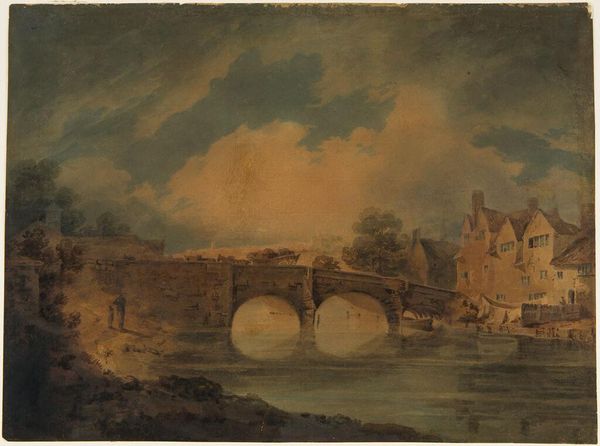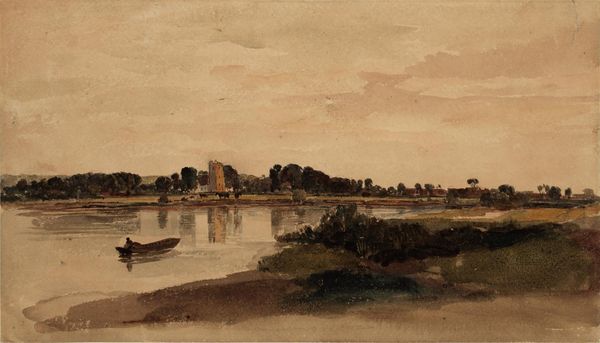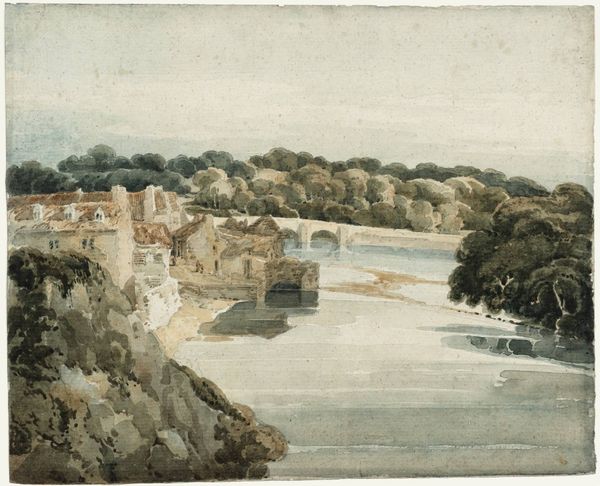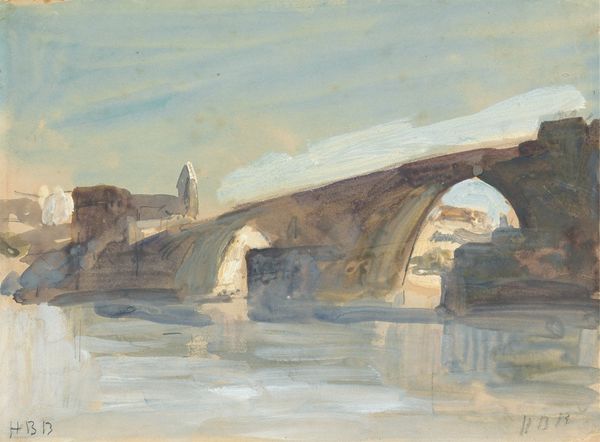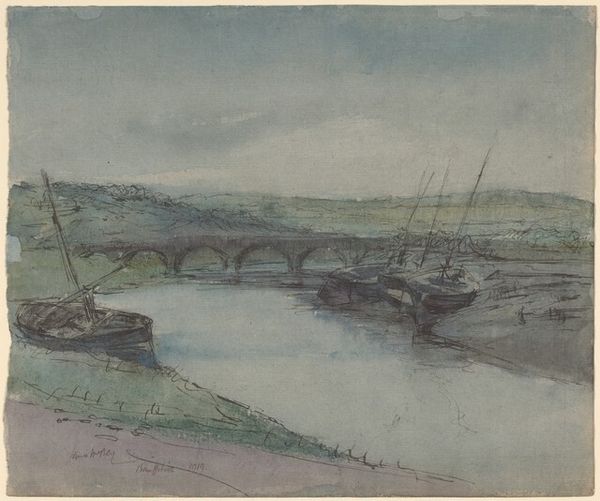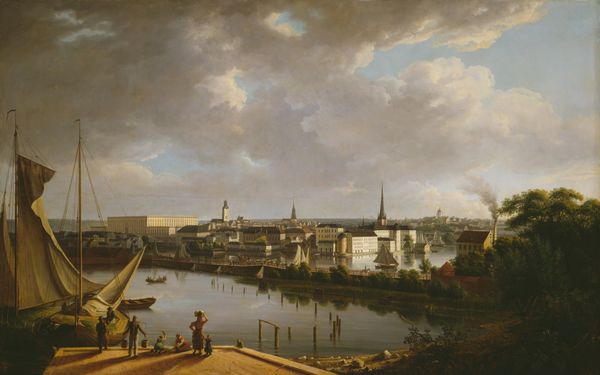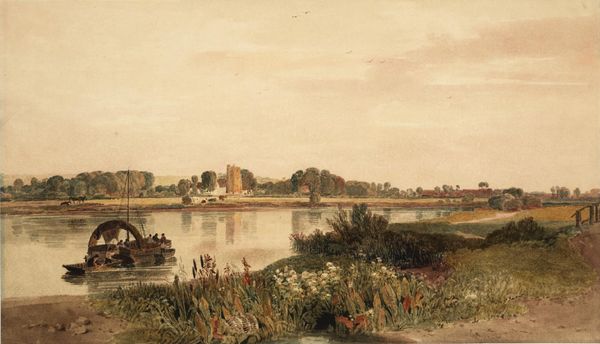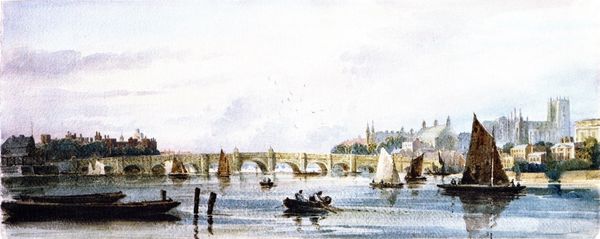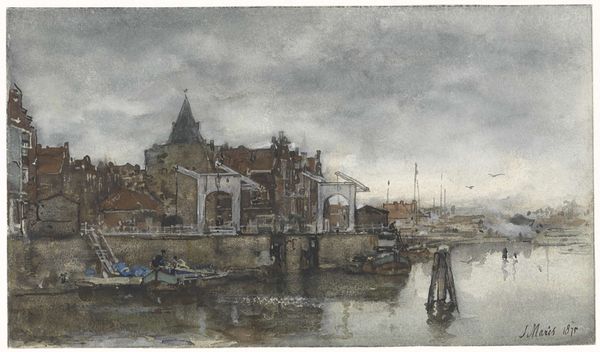
drawing, watercolor
#
drawing
#
water colours
#
landscape
#
watercolor
#
romanticism
#
cityscape
Dimensions: 12 3/8 x 20 5/8 in. (31.43 x 52.39 cm) (sheet)
Copyright: Public Domain
Editor: Here we have Thomas Girtin’s watercolor, "Morpeth Bridge," created around 1796. I’m immediately drawn to the delicate rendering of light on the water and buildings. What significance does this scene hold within its historical context? Curator: Girtin’s work encapsulates a crucial moment in British art and social history. Morpeth Bridge, a vital piece of infrastructure, symbolized connection and commerce. How does Girtin’s depiction of it, rendered with such seemingly objective beauty, participate in the burgeoning culture of picturesque representation that defined England's self-image at the time? Consider the way artists were commissioned to document landmarks and landscapes. Editor: It seems that these works served almost as PR, burnishing the image of England for both domestic consumption and for audiences abroad. Do you think the romantic style was almost designed to soften some of the harsher realities of life? Curator: Absolutely. While these scenes appear idyllic, the period witnessed immense social change. Rapid industrialization transformed landscapes, contributing to both wealth and poverty. Did artists like Girtin actively obscure those emerging problems with their compositions, and what role do institutions like ours have in challenging the assumed narratives promoted through imagery? Editor: So it's almost as if there is an institutional drive, both at the time and possibly perpetuated today, to put forward a certain idealized picture. Something to think about. Curator: Indeed. Reflecting on the image’s presentation in our gallery space allows us to question those very forces and narratives, making the artistic endeavor something much larger than a pleasing visual encounter. Editor: This piece encourages me to consider how landscapes were shaped not just by nature, but by social and political factors of the time, making art a powerful conveyor of those forces.
Comments
minneapolisinstituteofart almost 2 years ago
⋮
Built in the 1200s, Morpeth Bridge was the crossing point of the River Wansbeck—thus a strategically important asset on the main route between Newcastle and Edinburgh. The view is taken looking downstream to the east. The north and south abutments and the center pier still survive, but in 1835 the arches were destroyed when a larger bridge was built a stone’s throw further downstream. Beyond the north (left) end of the bridge, we see the arched tower of a chantry chapel built in 1296. Besides praying for the chapel’s patron, the priest collected the bridge tolls. This drawing is traditionally attributed to Thomas Girtin, but it may be a copy after his work. A closely related watercolor is in the Laing Art Gallery in Newcastle. Is Mia’s a copy or was the artist a forerunner to Claude Monet and the Impressionists, exploring the effects of different lighting upon the landscape'
Join the conversation
Join millions of artists and users on Artera today and experience the ultimate creative platform.


